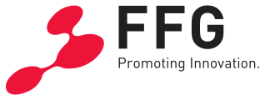Q_Magine
Scalable Electrically Read Diamond Spin Qubit Technology for Single Molecule Quantum Imagers
Ground-breaking progress in quantum metrology using NV diamond single spin qubits operating at room temperature led to imaging of single molecules carrying nuclear (1) or electron spin (2) and ultra-weak magnetic and electric fields (3)(4)(5). It is further anticipated that diamond quantum sensors will be one of the first quantum technology devices on the market, with applications in magnetic field sensing and sensors for medicine, biology, and chemistry.
Q-Magine comes with a disruptive approach for NV spin projection measurements, by developing hybrid photoelectric detection of NV electron spin resonances at room temperature, introduced jointly by the applicants (6)(7)(8) and used for constructing single qubit matrix sensors. This technique radically increases the Signal to Noise Ratio (SNR) compared to optical readout methods (6)(7)(8)(9). The electrical readout provides additionally device scalability and compatibility with semiconductor processing methods, which is one of the bottleneck issues for pushing forward the quantum technologies. The combination of photoelectric detection with a sub-millihertz spectra resolution Nuclear Magnetic Resonance spectroscopy using single NV qubit sensor (10), demonstrated by consortium very recently, will be used to establish a breakthrough in single molecular protein structural analysis on a quantum chip. These devices have high application potential in biology, e.g. as a quantum lab-on-chip proteome sequencer. This approach will progressed towards single molecular NMR imaging, resolving the structure of individual molecules without requiring averaging, and determining their chemical fingerprints by measuring the chemical shift. At the same time there is a wide span of industrial applications for the ultrasensitive detection using the magnetic field, that can profit form the imagers developed in Q-Magine, e.g. in the consumer electronics, automotive, medical diagnostics,and aerospace sectors.
CONSORTIUM
- Coordinator: Milos Nesladek (Hasselt University, BE)
- Emilie Bourgeois (IMEC, BE)
- Fedor Jelezko (University of Ulm, DE)
- Michael Trupke (University of Vienna, AT)
- Adam Gali (Wigner Research Center, HU)
MID-TERM REPORTING: Presentation of the mid-term results of the project
FINAL REPORTING: Presentation of the final results of the project
PROJECT WEBSITE: https://q-magine.univie.ac.at






